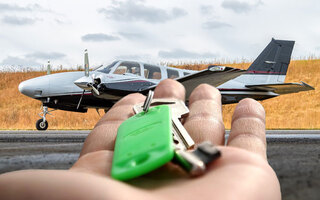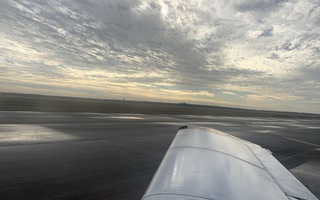For any pilot looking to chase a career in aviation and especially those who have already passed their flight training days, we all have to experience the dreaded check ride. All the time, money and energy put into completing the requirements count on this one day-and it’s the most nerve wracking thing. If you’re like any pilot you can’t sleep the night before, you show up to your testing place early to restudy everything because you managed to forget it all that morning, and if the smallest thing goes wrong you’re discouraged. But it all becomes worth it when you shake your examiner’s hand as they pass you your new pilot certificate, and you know you earned it. So, let’s talk about some things that might help you pass your commercial check ride:
- First things first, KNOW YOUR PLANE. Don’t test with a plane on a check ride you’re not familiar with. You should know factors like its glide capability, the systems, Vspeeds etc. This will play a part in both the oral and flight portion of the test. Consider some questions like what type of engine you have or how the electrical system operates. Glide capability comes into play on the engine out scenario and the power-off 180º.
- Know commercial pilot limitations and where to find them in the regulations. Two questions almost every examiner will ask involve common carriage and holding out. Here’s a hint-both are illegal. You cannot use someone else's plane and charge passengers their rate along with yours. You also cannot go advertising flights for passengers after becoming a commercial pilot, such as “$200 flights round trip to the Bahamas!” with you. That gets into Part 135 operations that has different stipulations, and that you don’t have the privileges to do without a Part 135 certification. This license allows you to operate under 14 CFR 119.1 for flights such as bird chasing, aerial photography and sightseeing (NOT charter flights).
- Another limitation as a commercial pilot is what you’re restricted to do if you do not have an instrument rating. If you’re unsure of where to find it, check out 14 CFR 61.133. Without an instrument rating, a licensed commercial pilot cannot carry passengers more than 50 nautical miles away from their departure airport. Regulations also restrict carrying passengers at night for hire.
- Now that you can carry passengers for hire, your flight planning and flying skills should be well developed past what they were as a private pilot. After all, if you’re being paid for these operations you need to be good at them. It comes down to the small things, like turning to a new heading. Don’t throw the bank in there, but smoothly start rolling it in. In short: Make. Everything. Smooth. You want your passengers to be comfortable and feel like they’re flying with an experienced pilot. As for flight planning, use all the resources available for a safe and well-planned flight! This is especially helpful on cross countries, time building to meet testing requirements. One way to do this is finding an airport to refuel for the lowest price. The GlobalAir.com Fuel Mapping tool is perfect for this and ranks airports in a specified radius from lowest to highest fuel price.
The last tip for a commercial check ride, and any check ride for that matter, is to not test until you’re ready. Take it from a pilot with a previous failure and who has talked with other pilots, everything is on your timeline. It’s when you’ve studied and flown enough that you feel you’re truly ready for this new license that it’s time to test. Check rides are stressful and nerve wracking. It’s likely that you’ll fly worse than normal on a test day, and that’s okay because it’s your nerves.
Just remember that safety is the goal, not perfection! Take a breath, take your time, then show the examiner what you’ve been training for.





